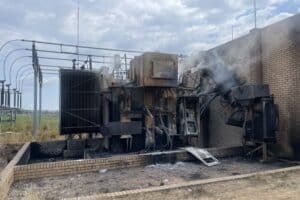The water in Hammanskraal has been a problem for 16 years.

Experts have called on the City of Tshwane to release the test results on whether water there is contaminated. The city is also being accused of accepting a false conclusion and trying to wash its hands off the problem.
WaterCAN South Africa said the results indicating there was no cholera found in the water was a cop-out.
“The only way to know if cholera is present is to test for it. We call on the city to make public the test results and explain how they’ll address the issue at Rooiwal,” WaterCAN’s manager, dr Ferrial Adam, said.
“You can’t say you tested for E. coli so there was no cholera. You need a cholera test.”
Hammanskraal water problem
Adam said the water in Hammanskraal had been a problem for 16 years.
“We are asking for those results. It should be public knowledge. If those results show they didn’t test, or they tested and it was faulty, or they didn’t alert the public, (that is) a crime,” she said.
ALSO READ: Hammanskraal cholera: Edwin Sodi’s R295m Rooiwal tender… where did the money go?
“E. coli is literally poo, because it comes from the human gut. E. coli is directly linked to human waste and is harmful. If you drink water with high levels of E. coli you will get sick.”
Hammanskraal farmer Theunis Vogel said he had written to Tshwane mayor Cilliers Brink begging for help.
“I can’t plant vegetables anymore … due to the high E. coli content in the water.”
The market started rejecting the produce due to its quality.
ALSO READ: Ekurhuleni on high alert as cholera cases rise nationally
“When they cut open the cabbages, there are black layers of sewage in the plants,” he said.
Vogel said he lost thousands of rands on two maize crops he couldn’t even sell on the street.
Cholera in SA
Gerhard Cronje, chief executive of water treatment service company Maskam Water, said growing up, cholera was something you found in rural Africa and beyond, not in South Africa.
“Now we see isolated cases. It does not seem like a big deal. Once we understand the origin of the problem, we will begin to understand there is no immediate solution and this situation will get worse, fuelled by increasing load shedding.”
ALSO READ: Blame game continues: ANC accuses DA of neglect in Hammanskraal cholera outbreak
Cronje said South Africa’s population had grown from 42 million in 1993, to 62 million.
“That is almost a 50% increase. Our water infrastructure – consisting of dams, pumping stations, purification plants, reservoirs and a water network – did not increase by the same magnitude. That means the system is running lean. The same applies to our sewage infrastructure,” he said.
Cronje said it was well documented the infrastructure, power, water, sewage and roads had not been properly maintained over the past 30 years.
ALSO READ: Hammanskraal outbreak latest: Zero cholera detected in piped water supply
“This means we now have a double whammy – a poorly maintained, overloaded water and wastewater infrastructure. “Sewage spills pollute the soil, the groundwater and the waterways that feed into our dams. Bit by bit we are becoming used to drinking our own poo,” he said.
Load shedding the new monster
Cronje said load shedding was the new monster.
“When there is load shedding, water cannot be pumped and water treatment plants cannot function. Some have backup power, but not all. Sewage pumping stations are nonfunctioning and raw sewage overflows.
“This contaminates the streets and surrounds, sewage enters our storm water systems and water courses – and the real danger is in what we cannot see.”






